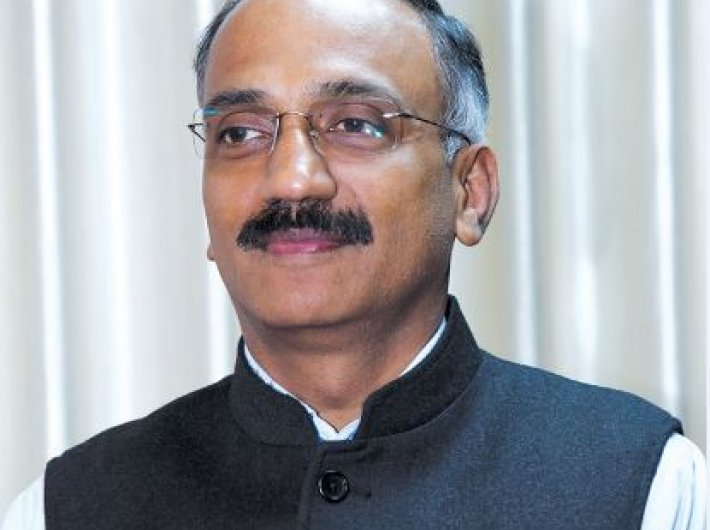Interview with Dr Nalin Shinghal, chairman and managing director, Central Electronics Ltd
Central Electronics Limited (CEL) was established in 1974 – when the world of electronics was a rarefied field. This public sector enterprise made continuos losses for many years, but for the past four years it has been making profits. Its CMD, Dr Nalin Shinghal, speaks with Praggya Guptaa about this transformation and future plans.
How did the company achieve the turnaround?
I joined CEL as CMD In 2013 when the company was in very poor financial health with almost 90 percent of net worth eroded … it was just Rs 6 crore. We operate in four verticals – solar energy, railways signalling, defence electronics, and integrated security and surveillance. Solar and securitie systems are two major growth areas for us. The growth of solar in last three years has almost tripled, and [business from] railway signalling has gone from Rs 29 crore to Rs 55 crore. The defence [business] has gone from Rs 45 crore to Rs 75 crore. These are the areas which helped us in turnover and making profits.
Today we are at a stage where our accumulated losses have come down to below Rs 17 core (accounts are yet to be finalised), and net worth has gone up to around Rs 50 crore. What is remarkable about the story is that it has happened without any government revival pacakge. In the past, the company has had two major revival packages from the government in 1996 (infusion of Rs 32 crore) and 2006 (infusion of Rs 16 crore). Now our profitability is doubling every year, and this year we are looking at the profitability of Rs 21 crore which was Rs 11 crore last year and about Rs 5 crore before that.
Four years ago the company’s infrastructure was in a shambles; you cannot recognise the infrastructure now and how it was two years ago. We have done a complete revamp of the campus infrastructure and processes too. Earlier we were using the old manual production process, which was cost ineffective.
Due to that, against the market price of the solar panel of Rs 40-45 for a watt, ours was coming out to Rs 70. Then we put in a new automated plant, which made our cost come down to Rs 30-35. Of course, the market now has gone below this, but at least we reached close to that and managed to reduce the cost drastically. This change did not happen due to just the change in equipment but also change in the production process too.
To further improve our processes, we took up the manufacturing excellence project in collaboration with CII. That has resulted in improved quality, and we managed to produce best quality panels in the country. Then we looked into new areas in solar energy expanding from technology centricity to applications. We have created our campus as the demo for various industrial applications made for different platforms such as railways and smart cities.
When you have a rooftop plant then you have a roof, and over that, you install a structure to put up a solar panel on it. This adds the huge weight of on the structure. Therefore, addressing this issue, we have developed the BIPV power plants where the panel itself forms the roof. In fact, the ministry of railways has seen the concept, and they are interested. To display this concept, we are building a new warehouse of 1,500 sq m, which will have a single roof with complete solar panels.
Is it like the solar roof Tesla is talking about?
No, that is a different technology. Here we are talking about solar panels. Essentially, the concept is the same, but the technology is different. The concept from Tesla is a home roof, and the one we are talking about cannot be used as a permanent roof.
What are the new projects you are taking up?
We have taken up a net zero energy project/Green Campus project. Our administrative complexes in the campus are energy positive for the last one and a half years. We have two high-efficiency solar plant in these buildings; so we are generating more energy than we are consuming. The surplus is transferred to the production unit through an internal grid on the campus. We are also making a demo park where we will put all these concepts to show the applications.
We have also developed flexible panels for the use of the railways. Last year we signed an MoU with the railways. We are developing specialised panels and power plants for railways applications. They used to put a standard solar panel with frames all around, and panels mounted on a thick angle. The train is going at 100 mph, and you put additional 800-900 kg weight on the roof which hampers stability of the train and generates the drag. So we developed a panel that can be pasted on the roof. We have done the pilot on Science Express, and now we will go ahead with full trains too.
Do you have solutions for the government’s ambitious project of smart cities?
Yes, we have developed smart solar ‘trees’ for smart cities. The network of these trees works as a power source, energy storage and provide communication network. Having the network, you have a base to provide any other services such as weather monitoring, pollution monitoring, traffic counts and emergency alarms.
Coming back to the turnaround, what are the other areas that have contributed growth?
We have seen developments on the HR side also. There was a complete mismatch on this side. We had an ageing workforce, no regular recruitment over 15 years, high average salary of Rs 70,000 plus per month, low motivation, low productivity, and no training programmes. Then we started a few things: the foremost was a regular system of intake of young engineers through the GATE exams as we are working on a high technology area, so we need to have young people on the technology side. Then we have recruited people for R&D work. And we have done recruitment at the higher levels and lateral entries for specialised business areas. We also organised a lot of training programmes for team-building and motivational knowledge programme. Ultimately, you are what your people are. No company may be able to work without an appropriate workforce.
Bigger PSUs like BHEL have diversified into solar energy to revive their profits. Do you think it will further increase competition for you?
Solar has a huge competition, and main competition is from China. Our module costs Rs 25-27 and China dumps it for Rs 22. The issue is we have one of the most ambitious solar programmes in the world of building the capacity of 100GW of solar power by 2022. We are at the place where our demand is going to affect the international prices. Already we are among the top three-four positions in solar production, and soon we will be among the top two countries in the world. So the worry is having the ambitious programme without a manufacturing base. It is good to take advantage of dumping, as we are getting that for cheap and can expedite solar power production, but in the long term where do we go? So for a long term viability of this project, we need a manufacturing base here in India.
But why is it not happening?
If you see the last decade or more, there are a huge number of announcements by a large number of private players of putting up the complete production chain, but none of that has materialised yet. That is the problem that we have been consistently facing. People are talking about this capacity, but I do not know how and when it will get delivered. We do feel that government must step in to deliver this on the ground. Whatever funds are being put into this should get into the infrastructure for solar manufacturing.
Is there any other business area that you are looking at for sustaining growth and profits?
We are working on a number of new products and business areas for future growthby further building our core competences in renewable energy related business such as battery energy storage, solar rickshaws, architecural use of solar panel, then piezo based products for defence and automation sector.
Microswave/Ferrite relatedprodurs for defence and medical applications. a and a range of other products in related areas collaboration with DRDO and CSIR labs.
praggya@governancenow.com
(The interview appears in the August 16-31, 2017 issue of Governance Now)

